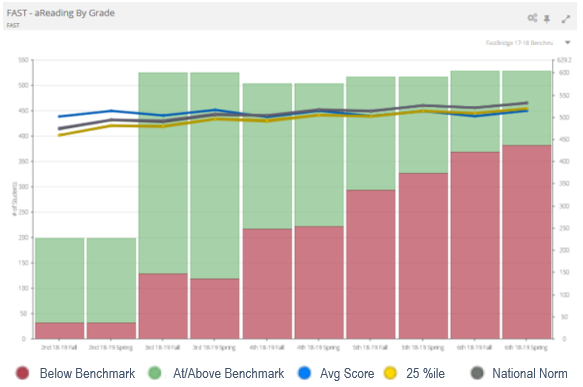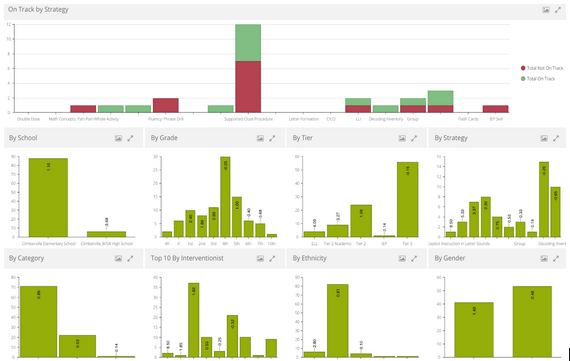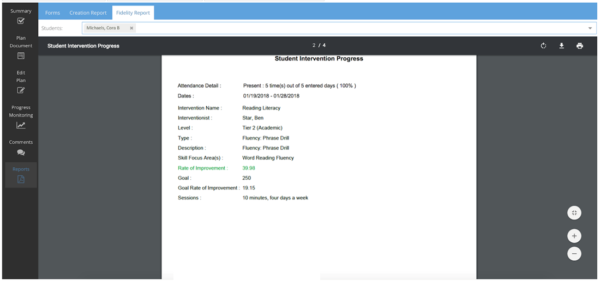How I Made MTSS Work in My District
As a practicing educator for 15 years, I coordinated our district’s multi-tiered systems of support (MTSS) and response to intervention (RtI) implementations for many years. For ten of those years, I was the only school psychologist in the whole district.
As this new school year starts, I know first hand the types of challenges many of you are navigating as you begin your MTSS/RtI processes.
Across the country, we're screening students and allocating resources to ensure we meet the needs of all students. We’re writing plans and starting interventions. We’re running parent meetings and internal trainings. We’re completing an unreal amount of documentation.
We’re doing all this because we’re passionate about supporting our students, and we believe that with the right support, every child can succeed.
But this work also comes with some nervousness and uncertainty around how to keep up this pace and stay on track throughout the year—and how to know when “what we’re doing” needs to change.
There’s no perfect, one-size-fits-all blueprint to making MTSS go smoothly or effectively. But no matter where in the country you are, or how big or small your district is, there are some systems and practices we can put in place to help our “future selves” continue helping kids.
Here are a few practices that I used in my district to support my students, my colleagues, and myself.
1) Start with a Universal Lens
Sometimes we get so laser-focused on our intensive interventions (which vary from Tier II/III to special education) that we get out of the habit of monitoring our Tier I efforts. But our high-quality, effective Universal/Tier I practices—the ones we are doing on a daily basis for every single student—are the bedrock of MTSS. If our Tier I instruction, assessment, and support practices are not effective, we will see repercussive issues throughout every aspect of our MTSS implementation (and in the success of our students).
- Monitor Tier I instruction. At any point in time, we should see 70-80% of students meeting their current benchmarks. If that is not the case, our next step is to look at our core instruction and dig into where we need to support our teachers or adjust our practices. Students are walking into our rooms with different needs, and sometimes that means we need to change our teaching/behavior to meet them where they are.
- Create a dedicated Universal/Tier I Data Analysis Team to monitor and adjust your universal efforts. (More on this below.)
- Use a valid and reliable universal screening assessment for all students in the fall, winter and spring.

2) Check In on Your Comprehensive Assessment System
Take a step back and look at your assessment practices. Ask yourself or your team:
- Do we understand each of our assessments and their purposes? If not, it’s possible to be over-testing, under-testing, or using your assessment results in ways that don’t match the assessment’s purpose.
- Do we administer the right assessments to the right students—when needed? For instance, students receiving Tier II and Tier III interventions need frequent progress monitoring testing, in order to measure whether the intervention is effective. Do we have a progress monitoring tool suited for that task?
- Are we careful NOT to administer assessments when they aren’t needed? Sometimes, we fall into a pattern of testing students, even if they don’t really need to be tested (because we already know the student is at or above benchmark). It’s always good to ask: Are the data we receive from this assessment worth the time taken away from student learning?
3) Create Tiered Data Analysis Teams (DATs)
Your district may call it something else, but for our purposes here, we’ll use Joseph Kovaleski’s term “Data Analysis Team,” or DAT. I recommend making sure you have multiple DATs for different purposes.
- Universal DAT: Meets about 3 times per year and checks in on Tier I instructional effectiveness. Are 70-80% of students responding to our general practices?
- Intervention DAT: Meets every 6 weeks for academic interventions and every 3 weeks for Behavior/SEL meetings. Teams review student progress, determine whether an intervention should be continued, adjusted, or exited, and identify action items for each student.
- Program DAT: Meets every 12 weeks to look at data for all students on Tier II and Tier III interventions. Are 70-80% of students responding? If not, are we implementing with fidelity?
Check out our free MTSS Toolkit Templates Pack for help getting started.

4) Set Your Decision Rules
Decision rules are the guidelines DATs use while making instructional decisions for students. They outline things like:
- What do we consider at, above, and below benchmark?
- At which specific cut points should students start receiving intervention?
- How many data points do we need before adjusting or changing an intervention?
If we haven’t thought through those criteria or cut points, it makes it very hard and stressful to make good, data-informed, and consistent decisions for students. It also means that your DAT meetings throughout the year may feel overwhelming, time-consuming, and confusing. Although they should be used in conjunction with qualitative data, like teacher comments, observations, etc., decision rules are one of the most important components of being able to monitor every student.
5) Set Up a Way to Track Your Intervention Implementation and Fidelity
So often, it can appear that our MTSS interventions or practices are not having an impact, when really, it’s a matter of how we are implementing that's making the intervention ineffective.
When setting an intervention plan for a student, we articulate the need and the goal for the student.
But we should also outline the specifics for the intervention itself: which intervention, at which frequency, in which setting, overseen by which interventionist, etc. The importance of doing this is that unless our actions match what we say we will do, we can’t really evaluate whether our intervention plan was effective.
Ensure that your MTSS workflows account for easy ways to collect data on the interventions themselves (attendance/participation, engagement, duration, frequency, etc.). Those data are just as important in your decision-making as the student’s data themselves.

We’ll unpack a lot of these ideas in further blogs, so be sure to subscribe now for ideas and strategies in the coming weeks.
And if you’re looking for training, professional development, and easy-to-use tools to support MTSS in your school or district, check out Illuminate eduCLIMBER, shown in the screenshots here.
Looking for support in creating an effective MTSS? Download our free MTSS Toolkit Template Pack here:
*****
Illuminate Education partners with K-12 educators to equip them with data to serve the whole child and reach new levels of student performance. Our solution brings together holistic data and collaborative tools and puts them in the hands of educators. Illuminate supports over 17 million students and 5200 districts/schools.
Ready to discover your one-stop shop for your district’s educational needs? Let’s talk.


